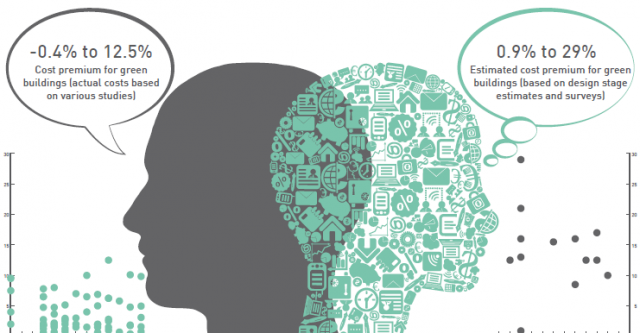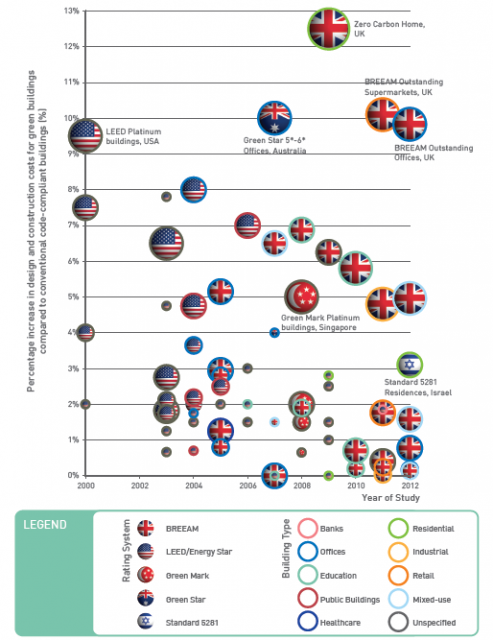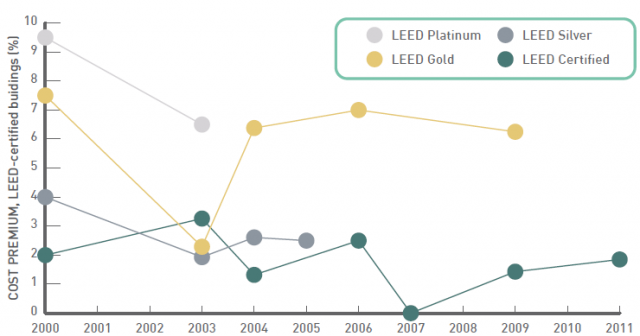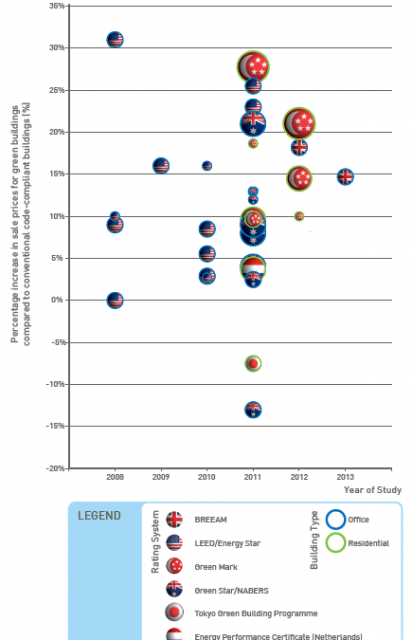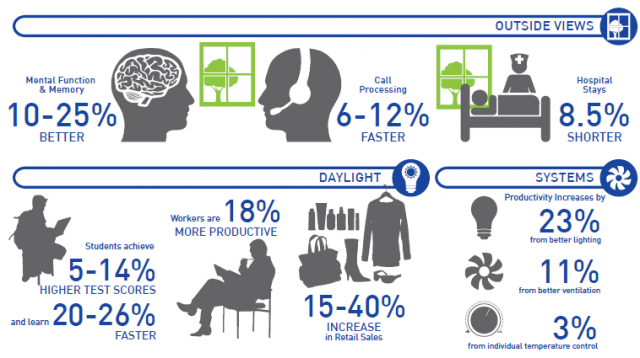In 2003, the first residential green building of New York City, the Solaire, was built in the north end of Battery Park City. The Solaire promoted green living and reduced negative environmental impact by focusing on indoor air quality, water quality and conservation, energy, and more. Ten years later, it is exciting to see that many more residential buildings have followed suit and incorporated sustainable developments that also spur good business.
The traditional belief that business and the environment cannot thrive together is being challenged not just by environmentalists, but by business leaders. For example, Nature’s Fortune: How Business and Society Thrive by Investing in Nature, comes from Mark Tercek, a former Managing Director at Goldman Sachs who helped start Goldman’s environmental policy framework. The mutual benefits flowing between forward-thinking business and a better human and natural environment are also emphasized by the World Green Building Council (WGBC) in their report on green residential buildings, The Business Case for Green Building: A Review of the Costs and Benefits for Developers, Investors and Occupants.
The booming construction of green buildings isn’t just fueled by the increase in environmental concern or the building’s environmental benefits. Everyone already knows the environmental advantage of green buildings. What is interesting is the WGBC reporting’s on the financial gains and improvements of green buildings; a reality many people simply don’t recognize or still believe to be a false presumption. WGBC’s report expressed benefits that not only applied to tenants of green buildings but also developers and owners. The infograph below is a quick overview of the personal and overlapping benefits received by each.
Many people are concerned about the higher startup design and construction costs associated with green buildings. The caution is reasonable: not only do green buildings look better, they also often incorporate innovative technologies for efficiency. However, these benefits of green buildings don’t always translate to higher costs; people and industries just think they cost a lot more. WGBC addresses this issue as the Perception Gap, where the estimated and actual cost premiums of green buildings were plotted against each other. As you can see, most of the estimated cost premiums centered on a fifteen percent increase whereas most of the actual cost premiums were roughly under a four percent increase.
Looking at green residential buildings specifically, All but one of the design and construction costs of green residential buildings are at or under a three percent increase. The outlier was Zero Carbon Homes in the UK which had a twelve and a half percent increase; a small increase in costs when considering its noble agenda of zero carbon emissions.
WGBC also reported that green buildings are experiencing decreasing costs over time. This is attributed to more experience and efficiency in designing and constructing green buildings and better education, awareness, and assessment of green buildings and sustainability issues. Another factor is that the gap between the baseline standard for building codes and green buildings are diminishing.
The graph shows decreasing and more stable prices.
The innovative technology and alluring appeal of green buildings also make them a valuable asset. The increased appraisal of the asset can be credited to higher rental and lease rates, lower operating expenses, higher occupancy rates, and lower yields (higher transaction price due to lower capitalization and discount rates). The sale prices for green buildings when compared to conventional code-compliant buildings ranged from negative thirteen percent to positive thirty two percent, but was concentrated around ten percent. The study also found that increasing asset value is accompanied by a high standard of green certification. When considering LEED certifications, WGBC stated that “…just being ‘LEED certified’ does not add value- it starts at LEED Silver”.
Two quick facts about the more well-known (operating costs and health) benefits of green buildings:
- An upfront investment of at least two percent on construction costs of a project can amount to savings of over ten times the initial investment in twenty years. Source: Kats, G. 2003. Green Buildings Cost and Financial Benefits. Boston: Massachusetts Technology Collaborative.
- Productivity and health benefits
New York City boasts quite a few magnificent green residential buildings. The standout in affordable green housing is Via Verde, in the Bronx. (Site here.) Of course, the next expected benchmark is for the features of a ‘green’ building to be adopted as the norm, and for the designation ‘green,’ as successful as it has been for marketing, to vanish completely.
The Solaire 20 River Terrace, Manhattan
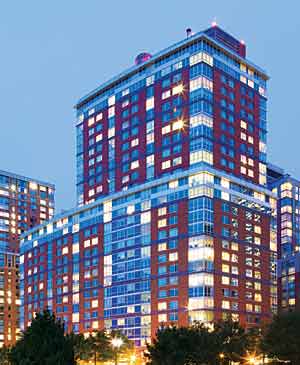
Photo: Arch record construction.com
- Filtered air continuously humidified or de-humidified
- Waste water and storm water are reused to provide water for toilet flushing, landscape irrigation, and cooling towers
- Energy design is thirty five percent more energy efficient than regulation requires; results in a sixty seven percent lower electricity demand during peak hours
- Solar panels integrated beautifully into the side of the building
- Rooftop garden that provides natural insulation

Photo: joonbug.com
The Visionaire 70 Little West Street, Manhattan

Photo: Americanaldes.com
- Constructed with fifty percent recycled materials
- Sky-lit swimming pool
- Windows that filter out UV rays: minimizes heat loss in winter and heat entry in summer
- Solar paneled exterior
- Rooftop garden that harvest rainwater for irrigation, reduce storm water run-off, and reduce building heat

Photo: Batteryrooftopgarden.wordpress.com
The Verdesian 211 North End Ave, Manhattan
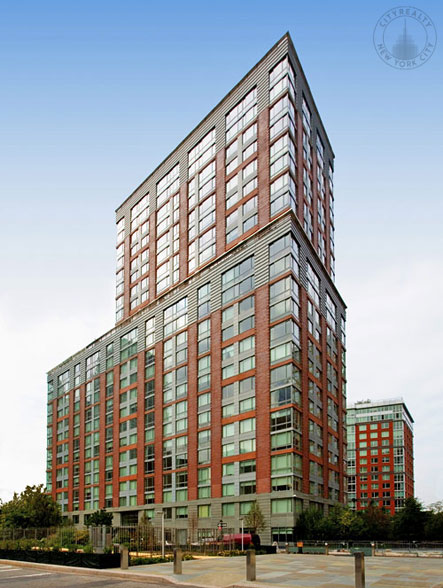
Photo: Cityreality.com
- Air filtration system that removes eighty five percent of particulates
- Abundance of natural light with floor-to-ceiling windows
- Recycle water for flush system and cooling tower

Photo: Farm8.staticflicker.com
Via Verde 704 Brook Avenue, Bronx

Photo: viaverdenyc.com
- City funded affordable complex in South Bronx
- Rooftop garden that dissipates heat and absorbs rainwater runoff
- Storm water reclamation system
- Building-integrated solar panels
- Over 20% of building materials were locally made

Photo: viaverdenyc.com
Graphs: World Green Building Council

